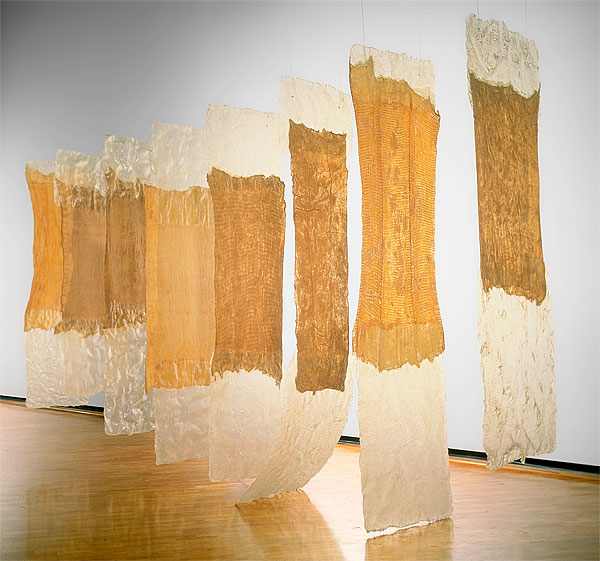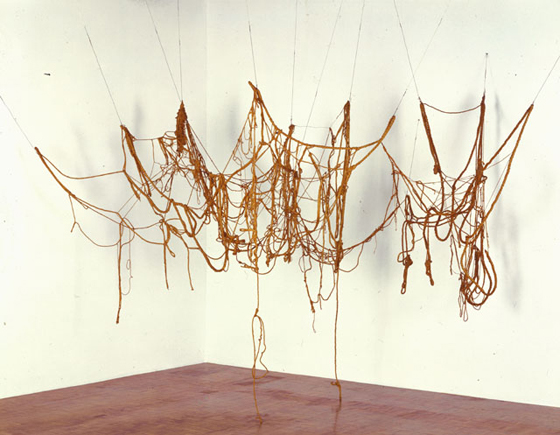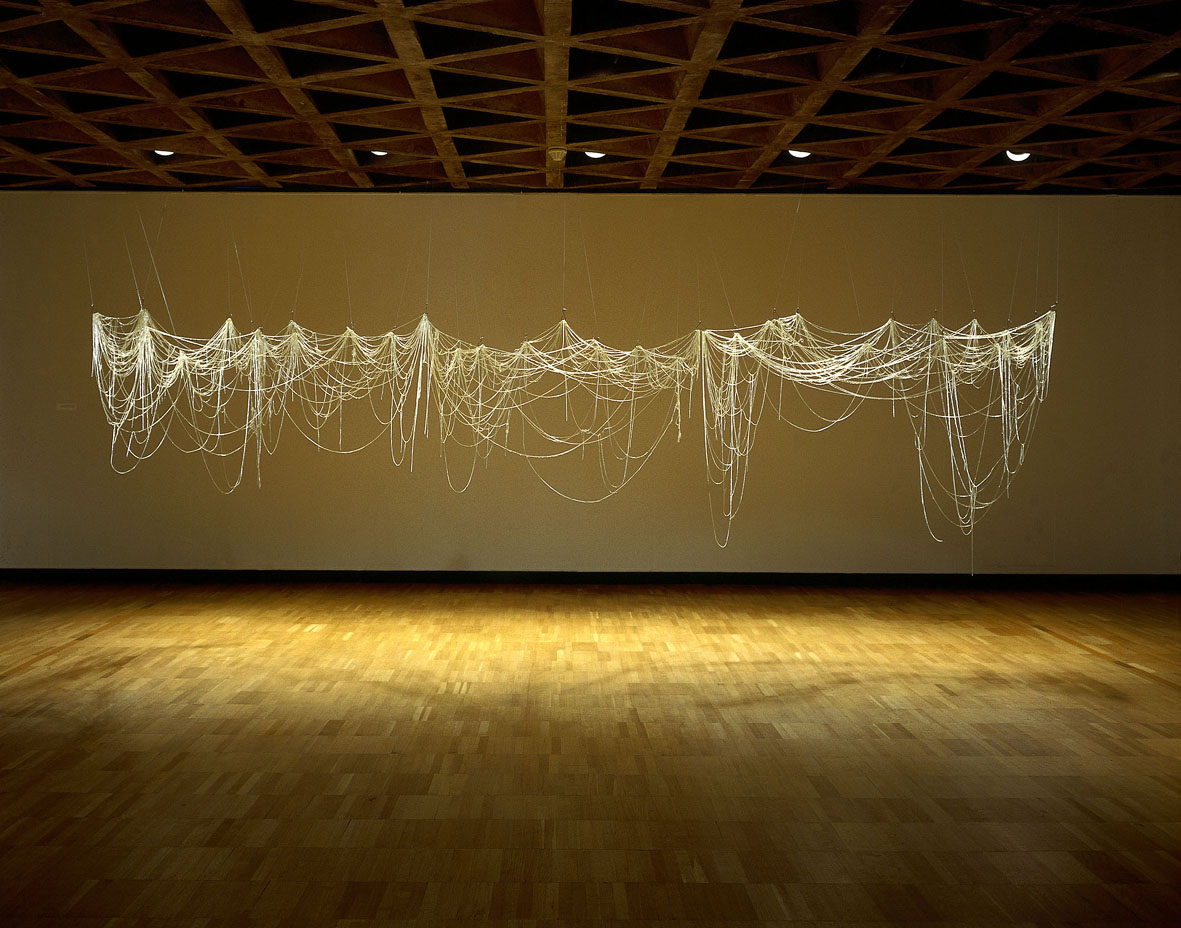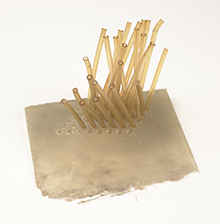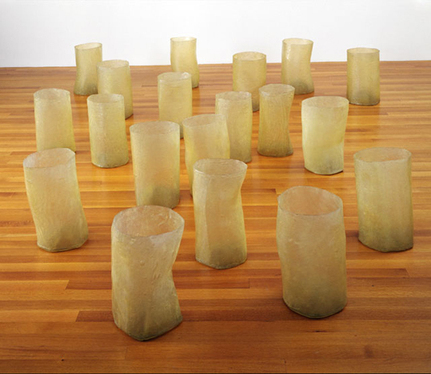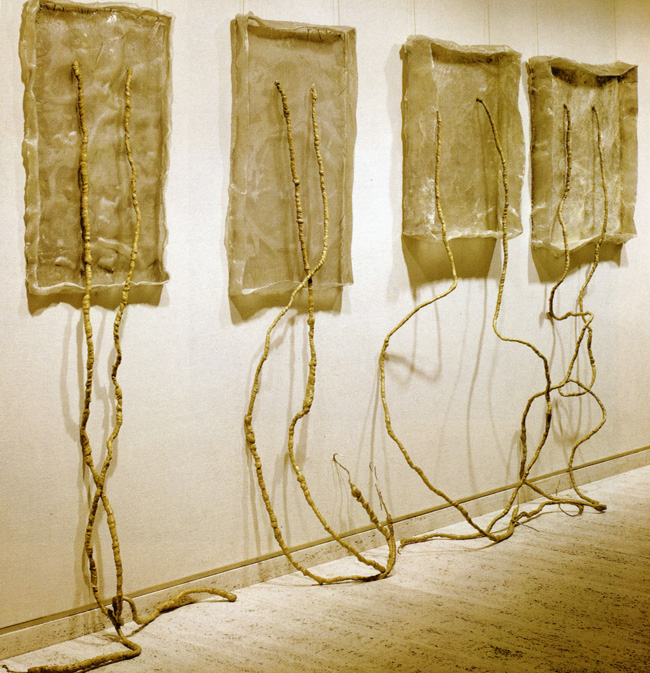<Back to Index>
- Sculptor Eva Hesse, 1936
PAGE SPONSOR
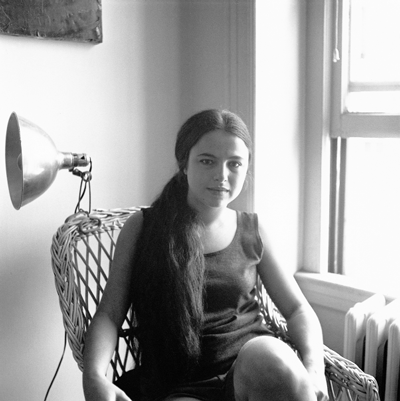
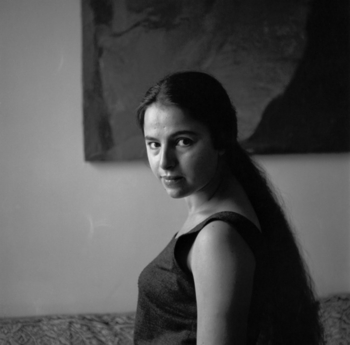
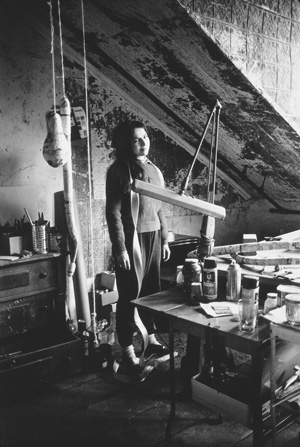
Eva Hesse (January 11, 1936 – May 29, 1970), was a Jewish, German born, American sculptor, known for her pioneering work in materials such as latex, fiberglass and plastics.
Hesse was born into a family of observant Jews in Hamburg, Germany. When Hesse was two years old in December 1938, her parents, hoping to flee from Nazi Germany, sent Eva and her older sister to the Netherlands via Kindertransport. After a few months of separation, the reunited family moved to England and then, in 1939, emigrated to New York City, where they settled into Manhattan's Washington Heights. In 1944 Hesse's parents separated, her father remarried in 1945 and her mother committed suicide in 1946.
After graduating from New York's School of Industrial Art in 1952, Hesse studied at New York's Pratt Institute (1952 – 1953) and Cooper Union (1954 – 1957), then at the Yale School of Art and Architecture (1957 – 1959), where she studied under Josef Albers and received a B.F.A. Upon returning to New York she made friends with many young artists. In 1961, she met and married sculptor Tom Doyle. In August 1962, Eva Hesse and Tom Doyle participated in an Allan Kaprow Happening at the Art Students League of New York in Woodstock, New York. There Hesse made her first three dimensional piece: a costume for the Happening. In 1963, Eva Hesse had a one-person show of works on paper at the Allan Stone Gallery on New York's Upper East Side.
The couple — whose marriage was coming apart — lived and worked in an abandoned textile mill in the Ruhr region of Germany for about a year during 1964 – 1965. Hesse was not happy to be back in Germany, but began sculpting with materials that had been left behind in the abandoned factory: first relief sculptures made of cloth - covered cord, electrical wire, and masonite, with playful titles like Eighter from Decatur and Oomamaboomba. Returning to New York City in 1965, she began working in the materials that would become characteristic of her work: latex, fiberglass and plastics. Eva Hesse had an interest in painting in the earlier stages of her career, as well as in drawing, as evinced by her numerous workbooks.
She was associated with the mid 1960s postminimal anti-form trend in sculpture, participating in New York exhibits such as "Eccentric Abstraction" and "Abstract Inflationism and Stuffed Expressionism" (both 1966). In September 1968, Eva Hesse began teaching at the School of Visual Arts. Her only one-person show of sculpture in her lifetime was "Chain Polymers" at the Fischbach Gallery on W. 57th Street in New York in November 1968; her large piece Expanded Expansion showed at the Whitney Museum in the 1969 exhibit "Anti - Illusion: Process / Materials". There have been dozens of major posthumous exhibitions in the United States and Europe, including at The Guggenheim Museum (1972, the San Francisco Museum of Modern Art (2002), The Drawing Center in New York (2006) and the Jewish Museum of New York (2006). In Europe, Eva Hesse had a posthumous exhibition in 2010 at the Fundació Antoni Tŕpies in Barcelona.
Except for fiberglass, most of her favored materials age badly, so much of her work presents conservators with an enormous challenge. Arthur Danto, writing of the Jewish Museum's 2006 retrospective, refers to "the discolorations, the slackness in the membrane-like latex, the palpable aging of the material… Yet, somehow the work does not feel tragic. Instead it is full of life, of eros, even of comedy… Each piece in the show vibrates with originality and mischief."
In 1969, she was diagnosed with a brain tumor. Her death in 1970 at age 34 ended a career spanning only ten years.
Her art is often viewed in light of all the painful struggles of her life including escaping the Nazis, her parents' divorce, the suicide of her mother when she was ten, her failed marriage and the death of her father. Danto describes her as "cop[ing] with emotional chaos by reinventing sculpture through aesthetic insubordination, playing with worthless material amid the industrial ruins of a defeated nation that, only two decades earlier, would have murdered her without a second thought." She also always felt she was fighting for recognition in a male dominated art world.
Hesse is one of a few artists who led the move from Minimalism to Postminimalism. Danto distinguishes it from minimalism by its "mirth and jokiness" and "unmistakable whiff of eroticism", its "nonmechanical repetition". She was influenced by, and in turn influenced, many famous artists of the 1960s through today. For many artists and friends who knew her, Eva Hesse was so charismatic that her spirit remains simply unforgettable to this day.
